kottke.org posts about photography
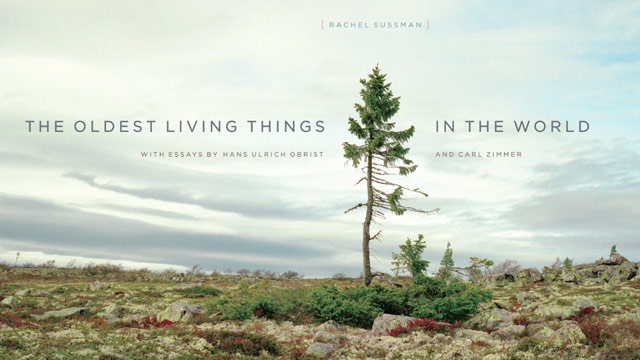
The very first Kickstarter campaign I ever backed was Rachel Sussman’s project to photograph the oldest living organisms in the world.
I’m researching, working with biologists, and traveling all over the world to find and photograph continuously living organisms that are 2,000 years old and older. I started the project 5 years ago, and have since photographed nearly 25 different organisms, ranging from the Bristlecone Pine and Giant Sequoias that you’ve surely heard of, to some truly unusual and unique desert shrubs, bacteria, a predatory fungus, and a clonal colony of Aspen trees that’s male and, in theory, immortal.
Her goal was to compile the photographs into a book. Almost four years later, the book is out. Looks like it was worth the wait. The trailer does a nice job explaining what the book is all about:
Asher Svidensky’s photographs from Mongolia of apprentice eagle hunters are fantastic. (FYI, they hunt with eagles, not for them.) Among Svidensky’s subjects is a 13-year-old girl, Ashol Pan:
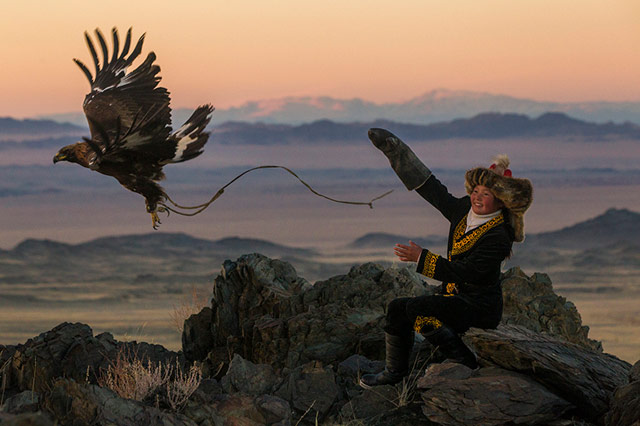
At the end of the photographing session, I sat down with her father and the translator to say my goodbyes, and I asked him this:
“How did it feel watching your daughter dressed in Kazakh uniform, on a mountain top, sending the eagle off and calling it back again?”
“Very good”
“And honestly… would you have considered truly training her? Would she become Mongolia’s first ever female eagle huntress?”
I expected a straightforward “No” or a joking “Maybe”, but after a short pause he replied:
“Up until two years ago my eldest son was the successor of the eagle hunting tradition in our family. Alas, two years ago he was drafted to the army, and he’s now an officer, so he probably won’t be back with the tradition. It’s been a while since I started thinking about training her instead of him, but I wouldn’t dare do it unless she asks me to do it, and if she will? Next year you will come to the eagle festival and see her riding with the eagle in my place.”
From the father’s answer I realized that the idea of women’s participation in keeping the tradition is a possible future, but just like many other aspect of Mongolian life, it’s an option which women will need to take on by themselves.
(via @rebeccablood)
For the past couple of months, Amit Gupta has been playing around with taking moving self-portraits with a camera mounted on a drone. Here’s an early effort. This past weekend, Amit’s efforts crossed over into the realm of art. This is beautiful:
In the comments at Vimeo, Alex Dao dubbed this type of photograph a “dronie”. We’ll see if that catches on.
Update: More examples of dronies here.
Back in the olden days, you just tied your cameraman right to the car:
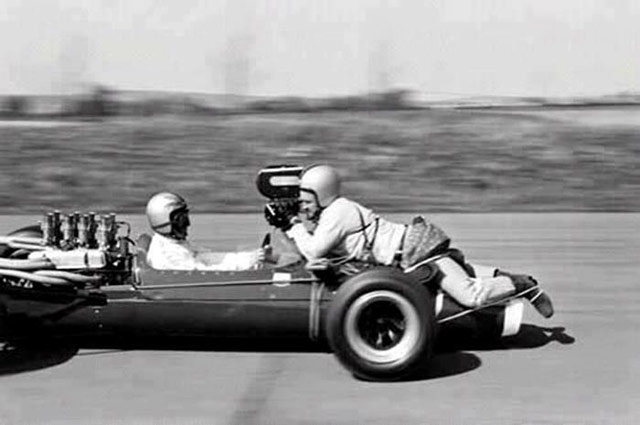
Looks almost as goofy as Google Glass. Legendary F1 driver Jackie Stewart wore this stills-only proto-GoPro at the Monaco Grand Prix in 1966 (though not during the actual race):
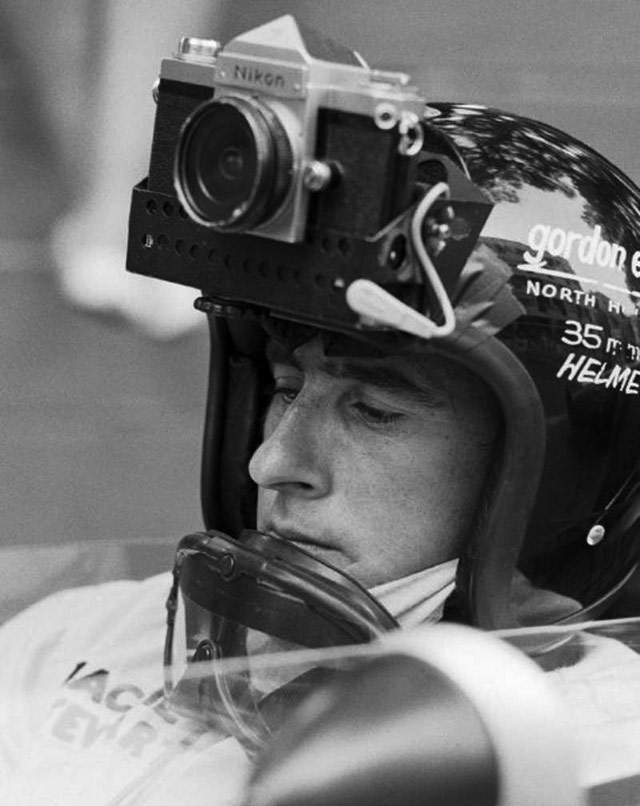
Stewart ended up winning that race. I believe Stewart is also the model for this contraption, which looks like a film camera counterbalanced with a battery pack?

That couldn’t have been comfortable. For some reason, neither of Stewart’s helmet cams are recognized by Wikipedia as being the first documented helmet cam, which is instead attributed to a motorcycle race in 1986:
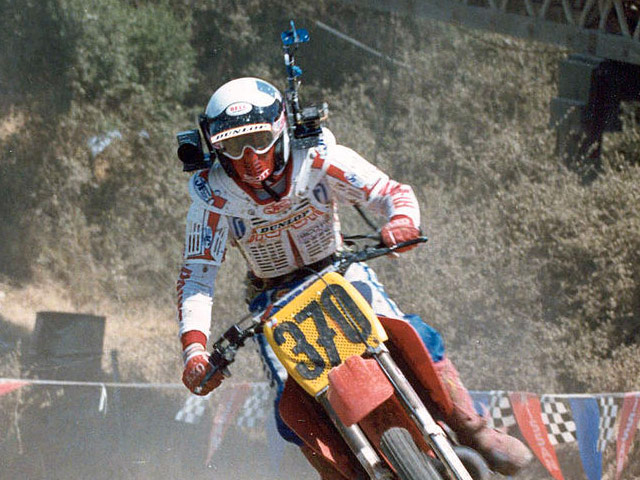
Update: Another early use of the helmet cam comes from the world of skydiving. Here’s Bob Sinclair with a camera setup from 1961:
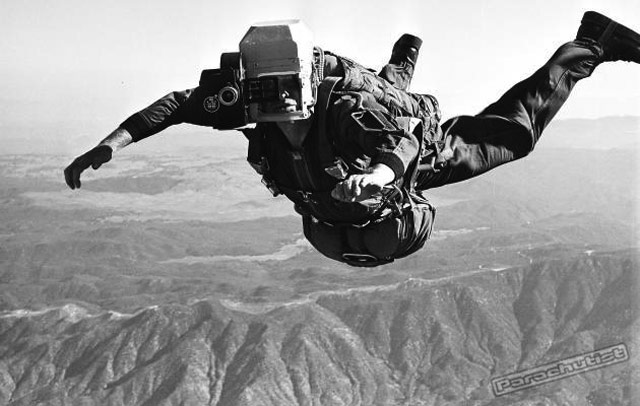
(thx, david)
Update: Not even a bulky taped-up helmet camera can keep Steve McQueen from looking cool:
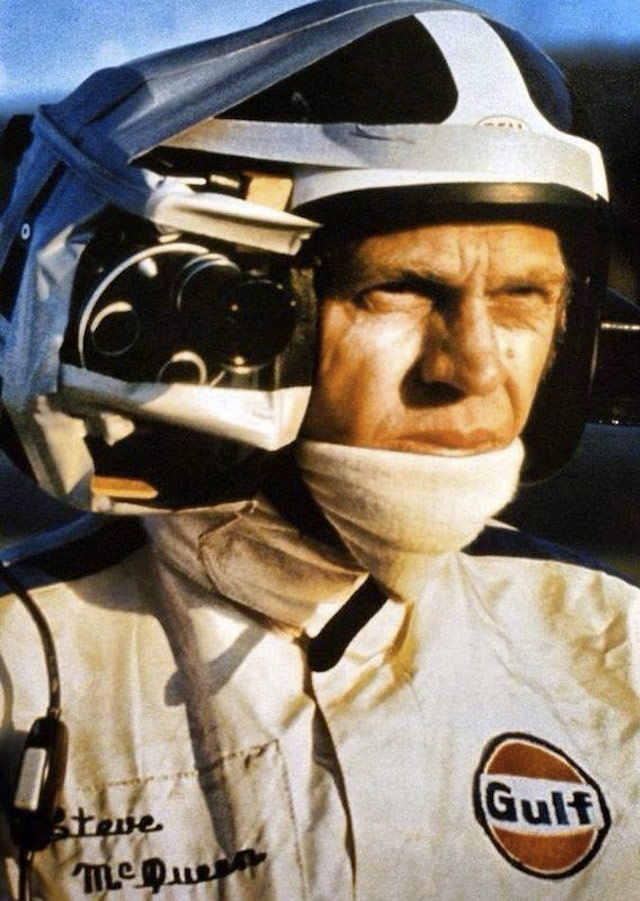
Well, he just barely looks cool. McQueen wore the helmet during the filming of 1971’s Le Mans. While researching this, I came across another film featuring McQueen that used helmet cams to get footage: 1971s On Any Sunday, a documentary about motorcycle racing. (via @jackshafer)
Life magazine asks: Is this the happiest photo ever made?

The photo was taken by Alfred Eisenstaedt, who was covering the University of Michigan’s marching band. When some children playing nearby set off after this practicing drum major, he snapped the photo. Said Eisenstaedt, “This is a completely spontaneous, unstaged picture.”
The photographer took many notable photos — the famous V-J Day kiss in Times Square, of Marilyn Monroe, of Albert Einstein, of Joseph Goebbels — but the drum major one above and his ballet series are my favorites (particularly this one).
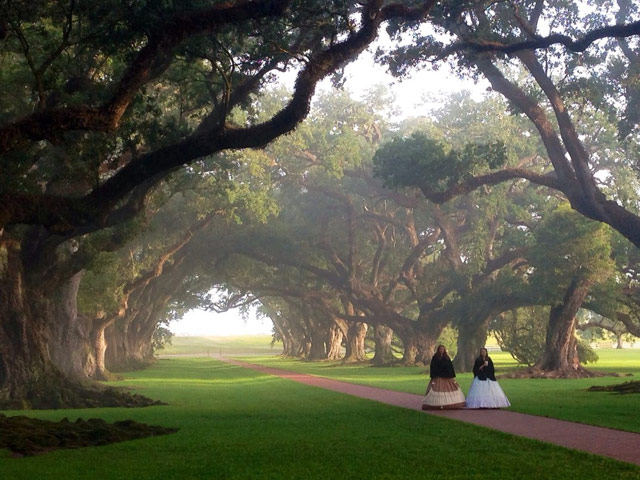
Smithsonian Magazine has announced the finalists in their annual photography contest. The shot above is a finalist in the Mobile category…it was taken with an iPhone 5. (via colossal)
From a large collection of photos shot on the set of 2001: A Space Odyssey, two of my favorites:
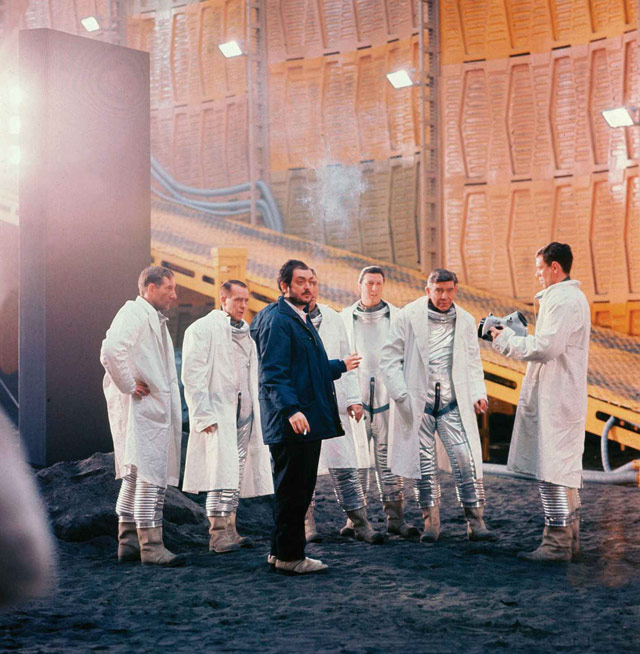
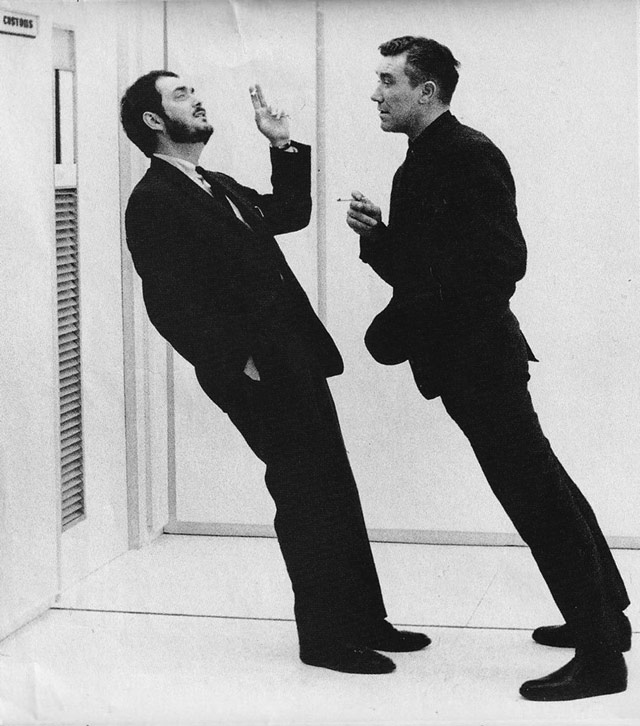
Those are a pair of smooth criminals right there.
Michael Paul Smith takes photographs of classic cars that evoke feelings of nostalgia for America in the 30s, 40s, 50s, and 60s. Take a look, these are about as Pleasantville as you can get:
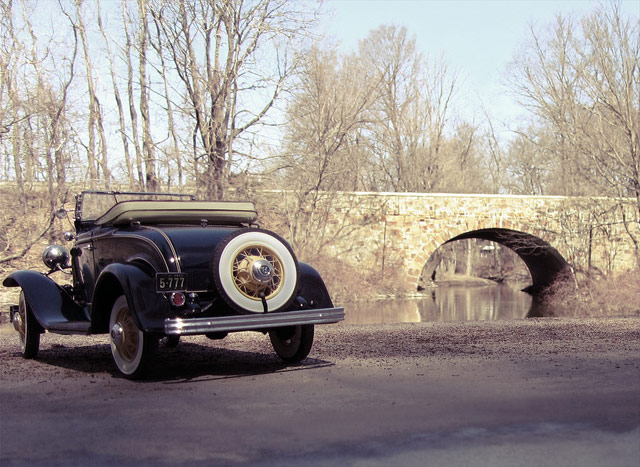
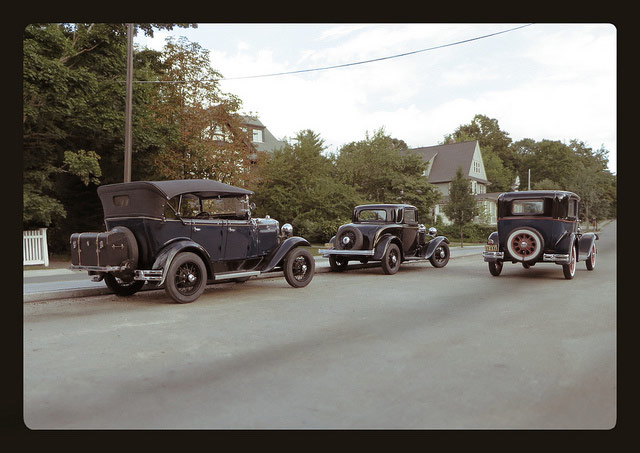
But as you’ll discover browsing through Smith’s collection, the cars he photographs are scale models. Here’s the set-up for that second shot:
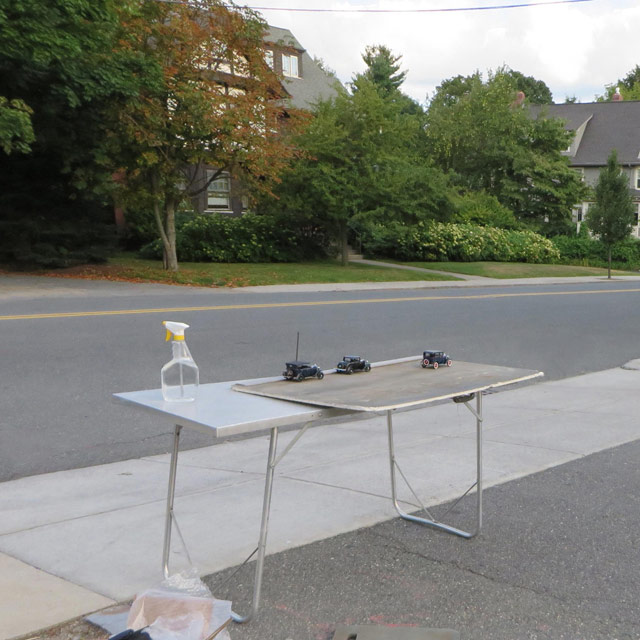
And here’s further evidence of Smith’s trickery:
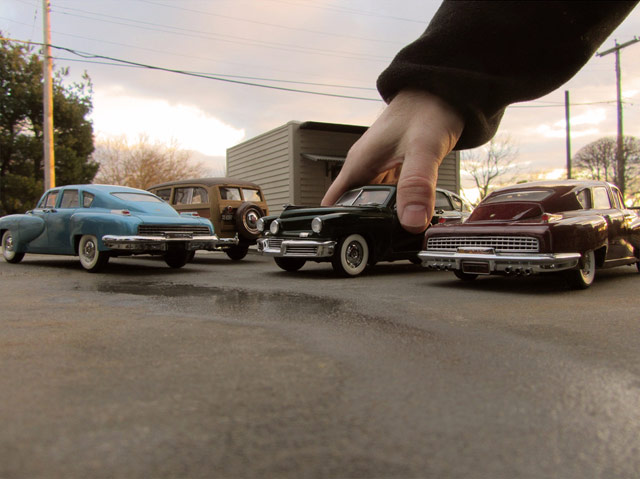
No Photoshop here…all effects are done in-camera. As Smith notes, “It is the oldest trick in the special effects book: lining up a model with an appropriate background, then photographing it.” (via @osteslag)
Now showing at IFC Center in NYC: Finding Vivian Maier. Maier is the Chicago street photographer whose extensive and impressive body of work was recently discovered at an auction. John Maloof bought Maier’s work, started posting it to a blog several years ago, did a Kickstarter (one of the first I backed) to fund a documentary about Maier and her photos, and now the film is showing in theaters around the US and Canada.
Photographer Ernest Goh documents chicken beauty pageants in Malaysia. Gorgeous photos, gorgeous animals.
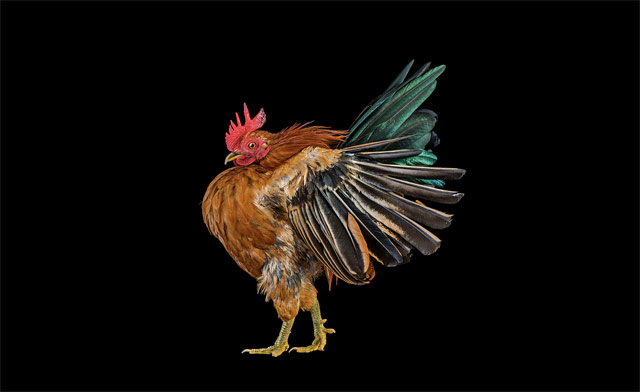
(via colossal)
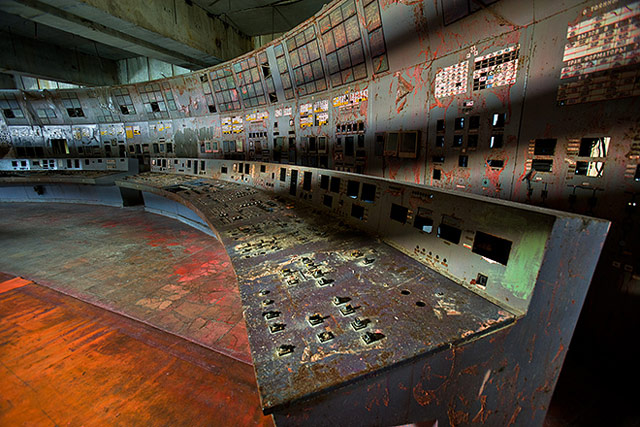
National Geographic photographer Gerd Ludwig has visited Chernobyl nine times over the past twenty years. The Long Shadow of Chernobyl is a forthcoming book collecting Ludwig’s photos, which includes an essay by Mikhail Gorbachev. The publication of the book is being funded via Kickstarter. There is also an iOS app.
Aw man, the International Center of Photography is closing its museum on 6th Ave. The good news is they’re planning on reopening in another location.
At our request for an interview, Lubell issued the following statement. “The International Center of Photography has been and continues to be at the center, both nationally and internationally, of the conversation regarding photography and the explosive growth of visual communications. In advancing this conversation, ICP has decided to move its current museum to a new space. This decision reflects the evolution of photography and our role in setting the agenda for visual communications for the 21st century. ICP will announce our future sites this spring. The school will remain at 1114 Avenue of the Americas in Midtown Manhattan.”
I’m long overdue for a visit…the Capa in Color exhibition looks promising, perhaps I’ll stop in this weekend. (via @akuban)

The folks behind Cabin Porn are making a book with photography by Noah Kalina. Outstanding.
I keep waiting to get sick of seeing photos of huge flocks of birds flying around like they share a brain, but it hasn’t happened. Alan Taylor has collected a bunch of starling murmuration photos at In Focus.
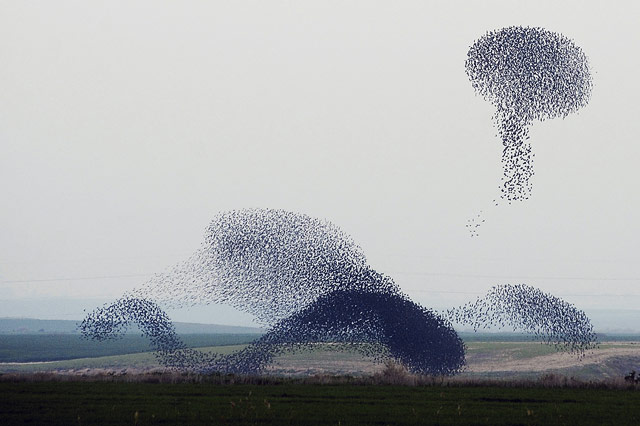
They’re even better in motion.
Like Ukraine, Venezuela has been experiencing anti-government protests over the past few weeks. In Focus has a selection of photos from the protests.
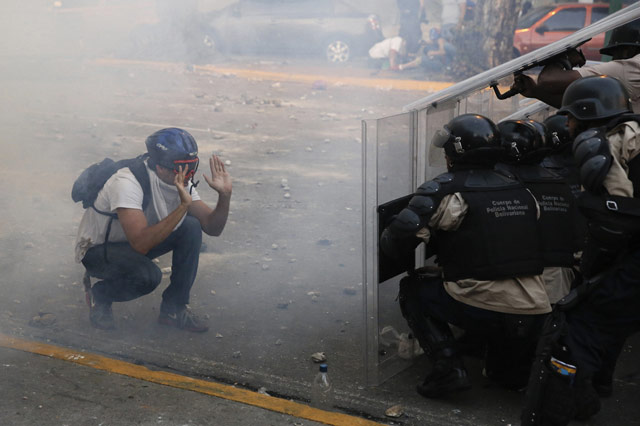
Moisés Naím has an article that explains what’s behind the protests.
This is the half of the country whose sons and daughters have taken to the streets to protest against a repressive regime that treats them as mortal enemies. And maybe they are. After all, they represent the vanguard of a society no longer willing to tolerate an abusive government with disastrous results to show for its 15-year grip on power: Venezuela is now the world champion of inflation, homicide, insecurity, and shortages of essential goods-from milk for children to insulin for diabetics and all kinds of indispensable products. All this despite having the greatest oil reserves in the world and a government with absolute control of all state institutions and levers of power. Sadly, that government has used its immense wealth and authority to push through unsustainable populist policies, buy votes, jail opposition leaders, and shut down television channels. Daily shortages of basic goods, fear of crime, and hopelessness have become unbearable.
Since November, anti-government protests have been happening in Ukraine. A recent truce gave hope that the violence would end, but mistrust on both sides has resulted in the worst clashes yet. The photos from the main fighting in Kiev are unbelievable.
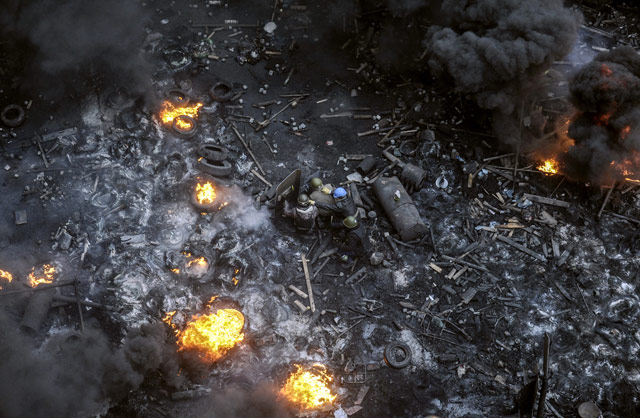
Why the protests? Think Progress published an explainer this morning, before the latest round of violence.
The protests began on November 22, after President Viktor Yanukovych reversed course and refused to sign political and trade agreements with the European Union that had been in the works for years after heavy pressure from Moscow to abandon the agreements. Despite a violent police crackdown, protesters vowed to continue blockading streets and occupying public buildings until their central demand is met: the current government, including Yanukovych, must go.
The treaties would have opened the European Union market to Ukrainian companies and could have boosted the Ukrainian GDP by more than six percent over ten years. The country is suffering through an economic depression and lower tariffs and expanded competition could have also lowered prices, “fueling an increase of household consumption of some 12 percent.” Ukraine would have also adopted 350 EU laws, codifying what many Ukrainians saw as a “commitment to European standards of governance and social justice.” To them, the treaty was a way of diminishing Russia’s long-time influence and reversing the trend of persistent economic corruption and sluggishness.
Photo-sharing community Flickr turned ten years old this week. At Time, Harry McCracken takes a look back.
Earlier photo sites were mostly concerned with letting you put your pictures in front of friends and family. Flickr did that, too. But from the start, it was building a community of photo lovers around the world who wanted to share images with other photo lovers, as well as thousands of special interest sub-communities. It was about storytelling.
I was at Etech when Flickr launched and was one of the site’s first few hundred users. The photo chat room they launched with was not that interesting to me, but when they turned it inside out, I was hooked. Happy birthday, Flickr.
Hassan Hajjaj’s photos of female motorbike enthusiasts from Morocco are fun.
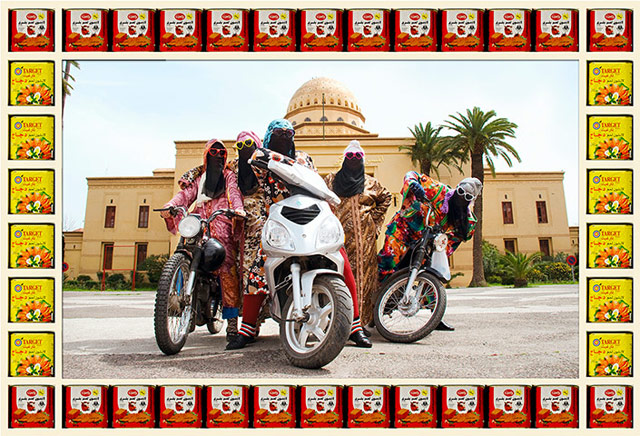
On display at the Taymour Grahne Gallery in NYC through March 7.
In Focus has posted some shortlisted images from The 2014 Sony World Photography Awards. This wildebeest photo by Bonnie Cheung stopped me in my tracks…it looks like a painting (or a cave painting).
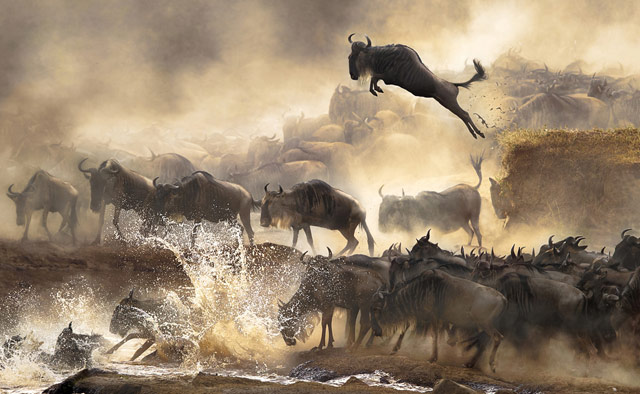
More here and here.
From photographer Victoria Will, olde tyme tin type portraits of celebrities at Sundance. The one of William H. Macy stopped me in my tracks:
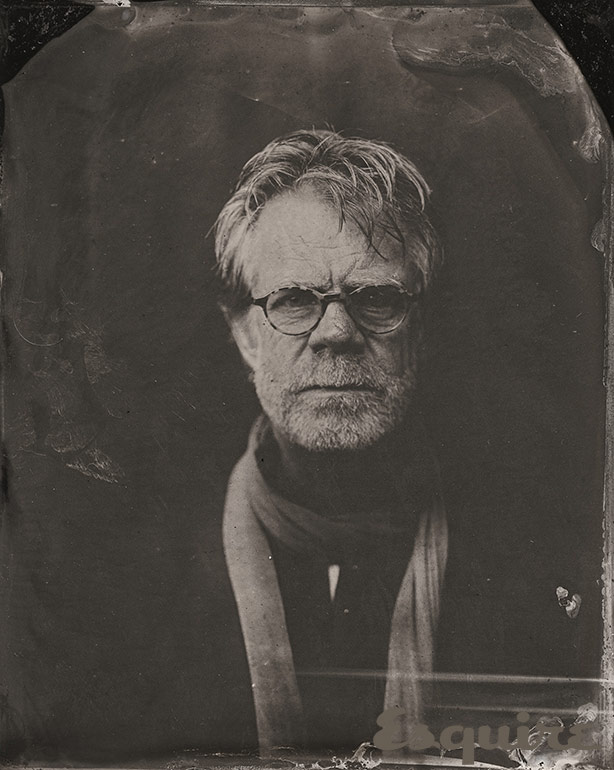
Several others are worth a look as well. (via @khoi)
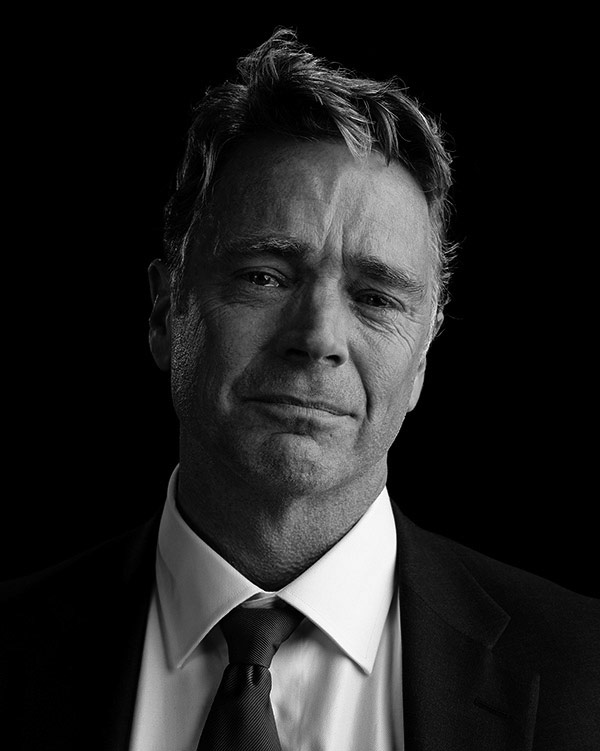
Photographer Jeremy Cowart writes about a rare time he made a real connection with one of his celebrity subjects. It happened during a shoot with the cast of The Haves and the Have Nots, a show on Oprah’s network. As usual with shoots like this, Cowart only got a few minutes with each subject, time to shoot but not much else. But then John Schneider pulled him aside.
Once we wrapped up his session, Tika walked off set and John came to me and whispered in my ear “Hey can you sneak a few more portraits of me?” and I said “sure of course”. He said “there’s something going on and I just need a photo.”
So I grabbed my camera again and John walked back on set.
He immediately began weeping. Legitimately crying. He was so good at impressions that I thought this was another impression and I thought “wow, what an acting talent.”
(via @gavinpurcell)
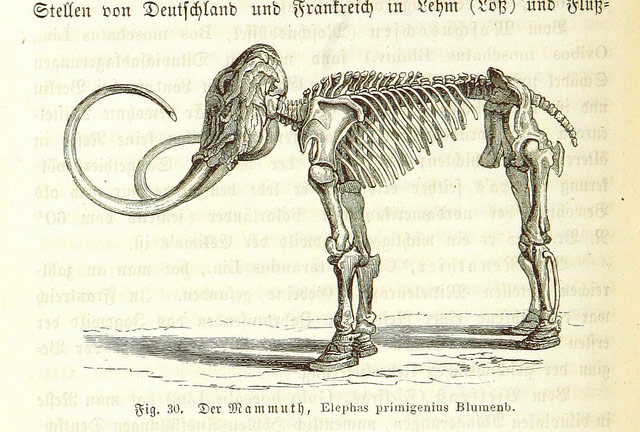
The British Library has a million images up at Flickr. 1,019,998 to be precise. And it appears that most (all?) of the images are copyright-free. An amazing resource.
From photographer Greg Alessandrini, a collection of photos of diners in New York City taken in the 1990s. I was pleased to see a shot of Jones Diner, which I ate at several months before moving to NYC:
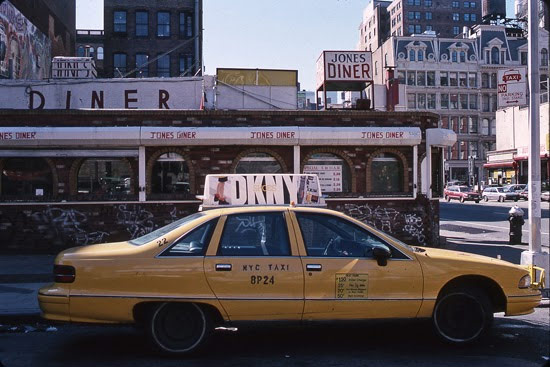
It closed shortly before we moved and I never got to eat there again. At the time, word was some condos were being built on the site, but it took ten years for construction to start. What a waste.
BTW, the rest of Alessandrini’s site is well worth a look…hundreds and possibly thousands of photographs of NYC from the 80s and 90s. (via @UnlikelyWorlds)
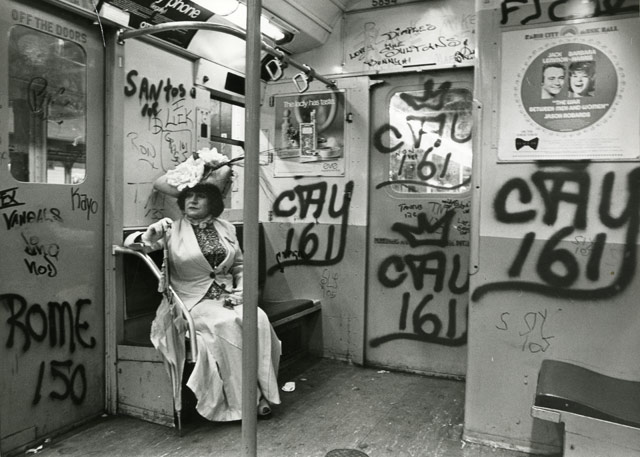
In March, the New York Historical Society is mounting an exhibition of photographer Bill Cunningham’s project, Façades.
Scouring the city’s thrift stores, auction houses, and street fairs for vintage clothing, and scouting sites on his bicycle, Cunningham generated a photographic essay entitled Façades, which paired models — in particular his muse, fellow photographer Editta Sherman — in period costumes with historic settings.
Craig Mod, writing for the New Yorker, says goodbye to cameras as photography transitions to the use of “networked lenses”.
After two and a half years, the GF1 was replaced by the slightly improved Panasonic GX1, which I brought on the six-day Kumano Kodo hike in October. During the trip, I alternated between shooting with it and an iPhone 5. After importing the results into Lightroom, Adobe’s photo-development software, it was difficult to distinguish the GX1’s photos from the iPhone 5’s. (That’s not even the latest iPhone; Austin Mann’s superlative results make it clear that the iPhone 5S operates on an even higher level.) Of course, zooming in and poking around the photos revealed differences: the iPhone 5 doesn’t capture as much highlight detail as the GX1, or handle low light as well, or withstand intense editing, such as drastic changes in exposure. But it seems clear that in a couple of years, with an iPhone 6S in our pockets, it will be nearly impossible to justify taking a dedicated camera on trips like the Kumano Kodo pilgrimage.
And indeed, the mid-tier Japanese camera makers (Panasonic, Fujifilm and Olympus) are struggling to find their way in the networked lens era. A few years ago, I wrote a post called “Your company? There’s an app for that.” about how smartphones were not only going to make certain devices obsolete, but drive entire companies and industries out of business. This bit, about cameras, seems almost quaint now:
Point and shoot camera — While not as full-featured as something like a PowerShot, the camera on the iPhone 3GS has a 3-megapxiel lens with both auto and manual focus, shoots in low-light, does macro, and can shoot video. Plus, it’s easy to instantly publish your photos online using the iPhone’s networking capabilities and automatically tag your photos with your location.
The best camera is the one you have with you the one with built-in posting to Facebook.
In a feature straight out of the movies, Dr. Rob Jenkins and his team have demonstrated that for sufficiently high-resolution photos, recognizable images of reflected faces of the photographer and bystanders can be retrieved from a subject’s eyes.
The researchers say that in crimes in which the victims are photographed, such as hostage taking or child sex abuse, reflections in the eyes of the photographic subject could help to identify perpetrators. Images of people retrieved from cameras seized as evidence during criminal investigations could be used to piece together networks of associates or to link individuals to particular locations.
By zooming in on high-resolution passport-style photographs, Jenkins and co-researcher Christie Kerr of the School of Psychology, University of Glasgow were able to recover bystander images that could be identified accurately by observers, despite their low resolution.
Here’s some older research about reading confidential data using reflections from tea pots, glasses, eyes, and even diffuse materials like fabric. And of course, there’s the famous eBay tea kettle. (via waxy)
Alex is 2-year-old Henry’s nanny. She’s also a photographer. One day, at Henry’s behest, the pair took photos of each other in the same pose. It turned into a project called Henry’s Concepts.
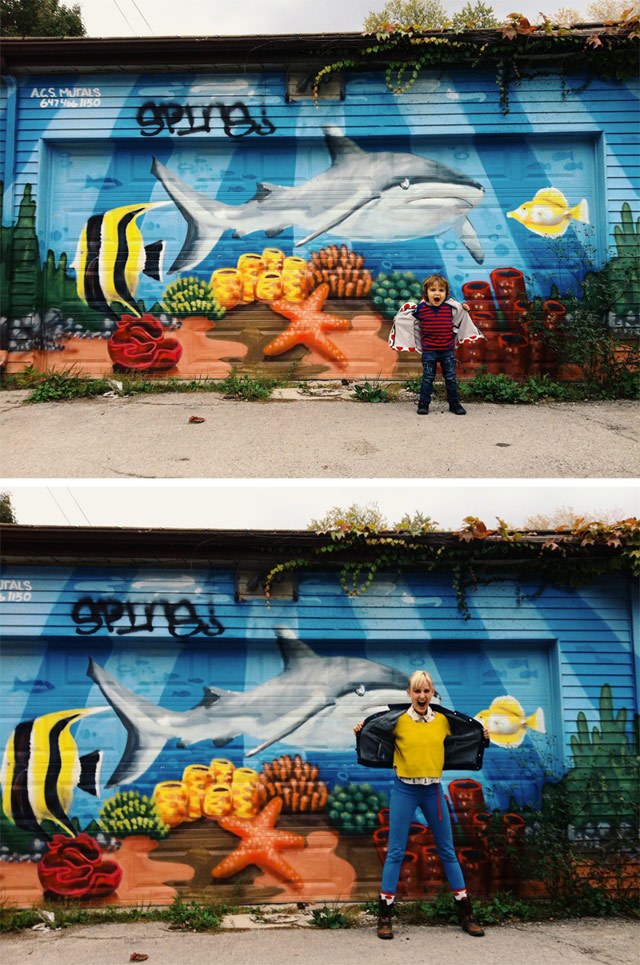
Each of these photos is strictly Henry’s idea. He chooses the location and the pose. I take the photo of him and then he takes the photo of me.
(via cup of jo)
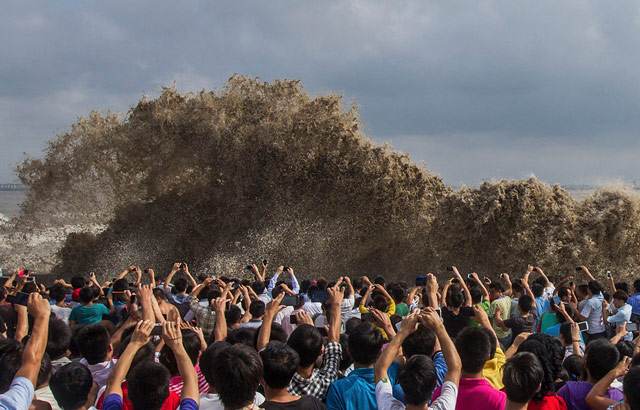
As I said last year, the photos are always my favorite end-of-the-year media to check out. It’s only early December, but a few media outlets are out of the gate already with their year-end lists.
Best photos of the year 2013 from Reuters.
The Top 10 Photos of 2013 from Time.
2013 Pictures of the Year from Agence France Presse.
The 80 Most Powerful Photos of 2013 from The Roosevelts.
Las mejores fotos del 2013 from Yahoo En Español.
The 45 Most Powerful Photos Of 2013 from BuzzFeed.
2013: The Year in Photos from In Focus. Here are parts two and three.
2013 Year in Pictures from Big Picture. Here are parts two and three.
Year in Focus 2013 from Getty Images.
Year in Photos 2013 from The Wall Street Journal.
The Year in Pictures from The New York Times.
Do you have a list for this list? Send it along!
Newer posts
Older posts



























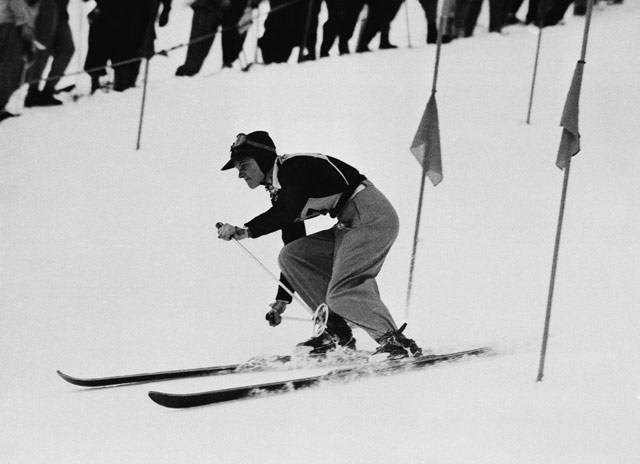
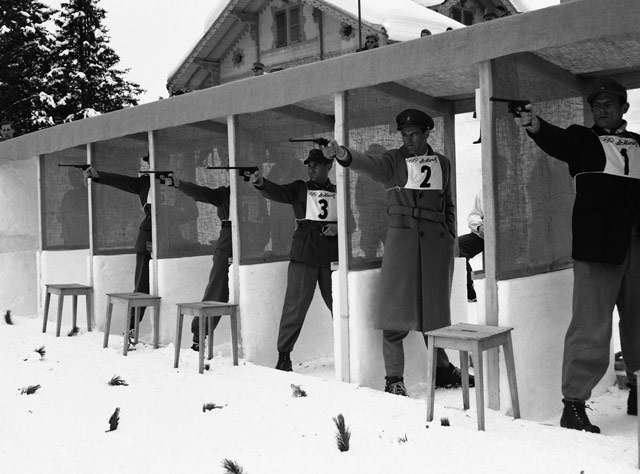





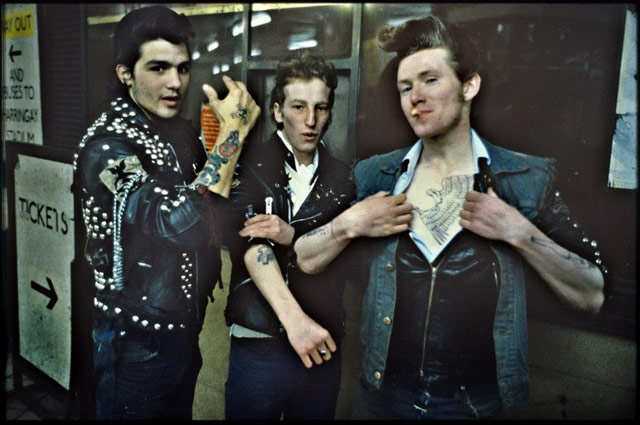
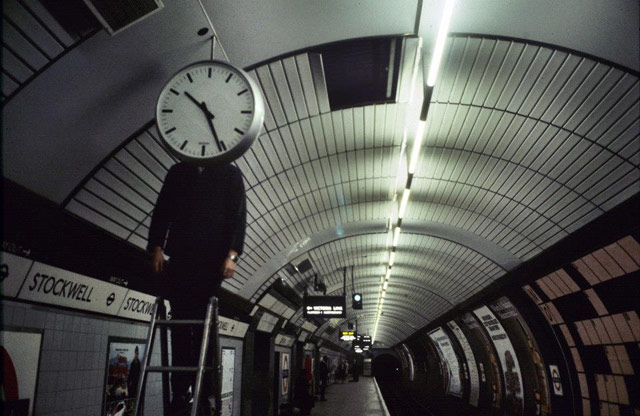




Stay Connected